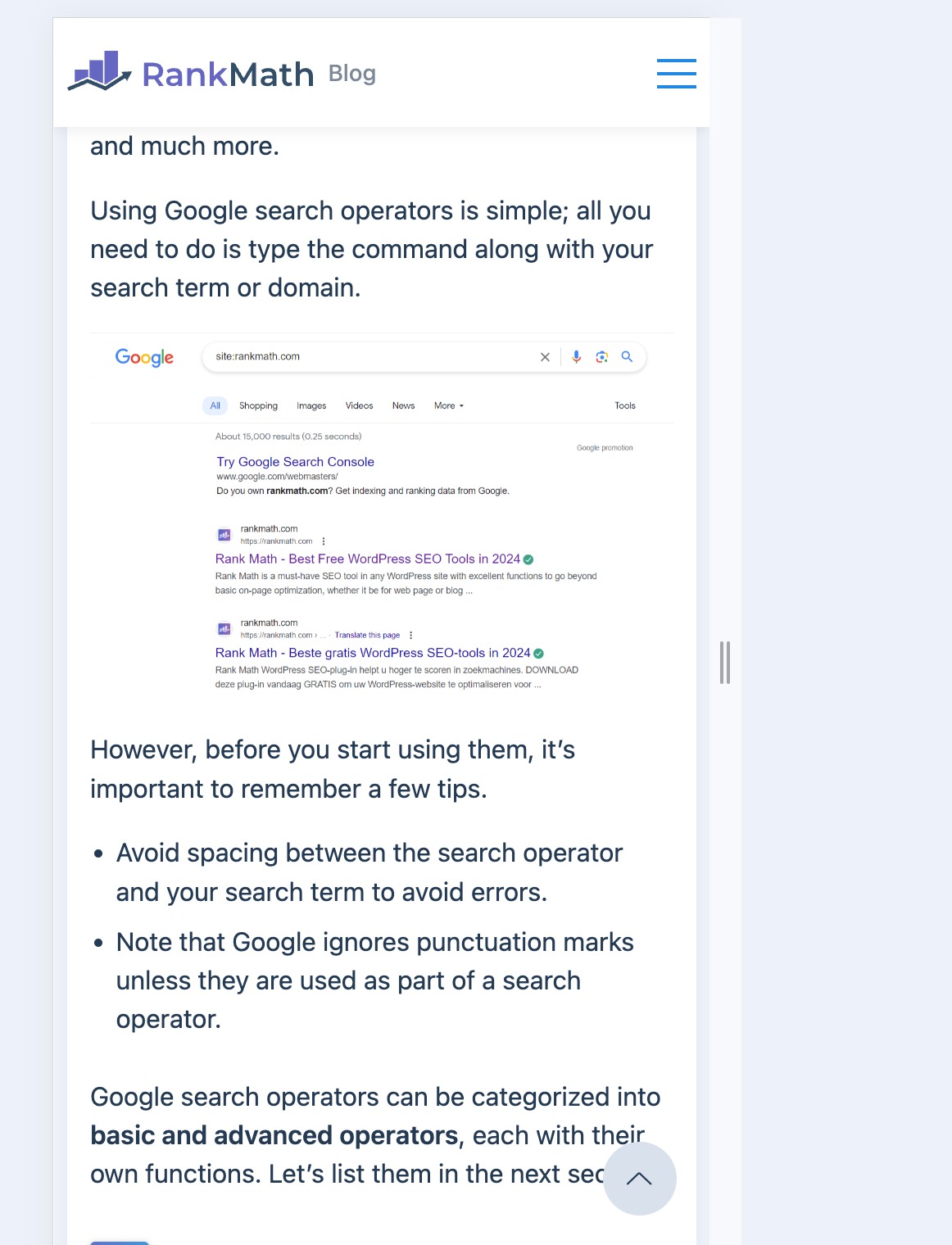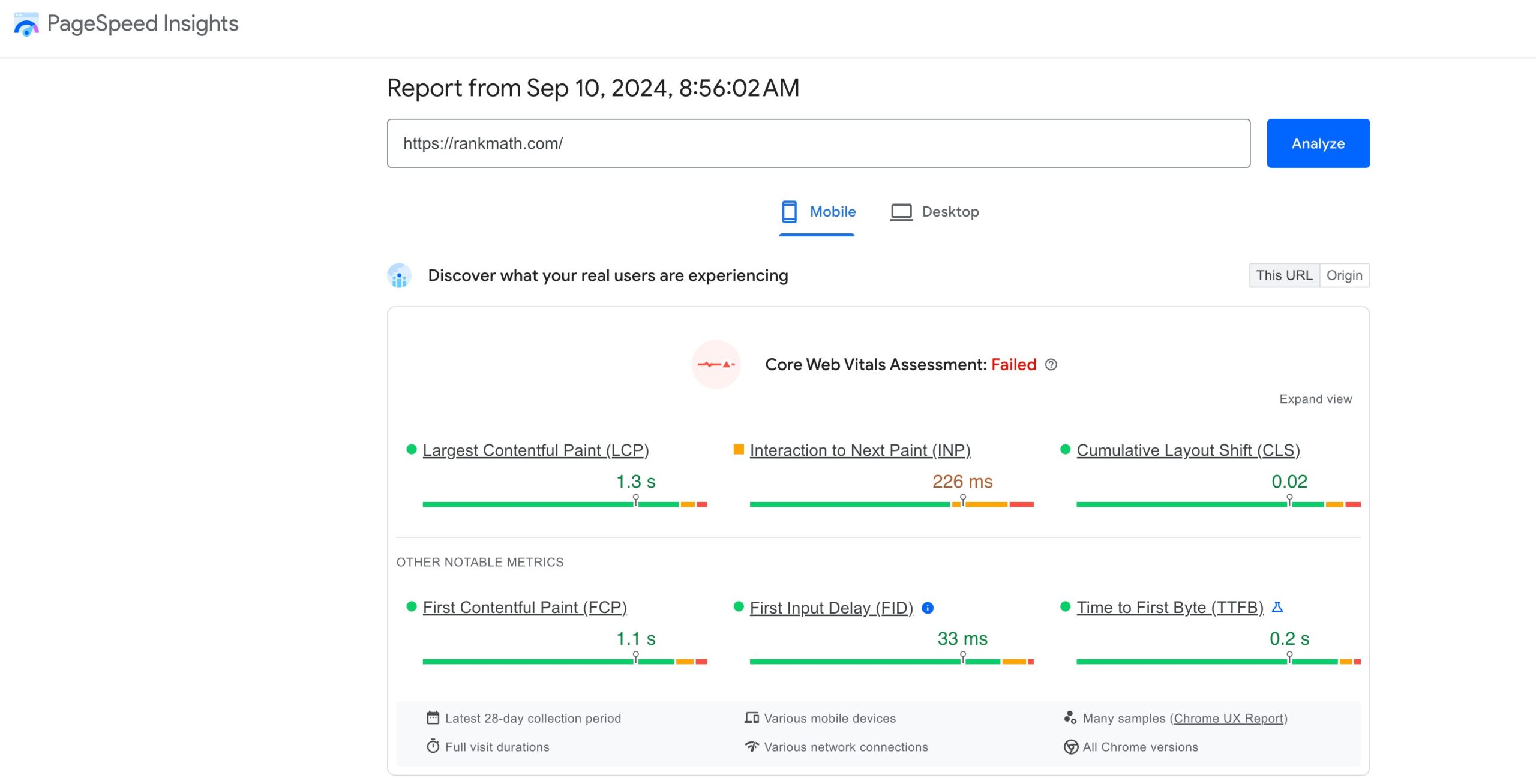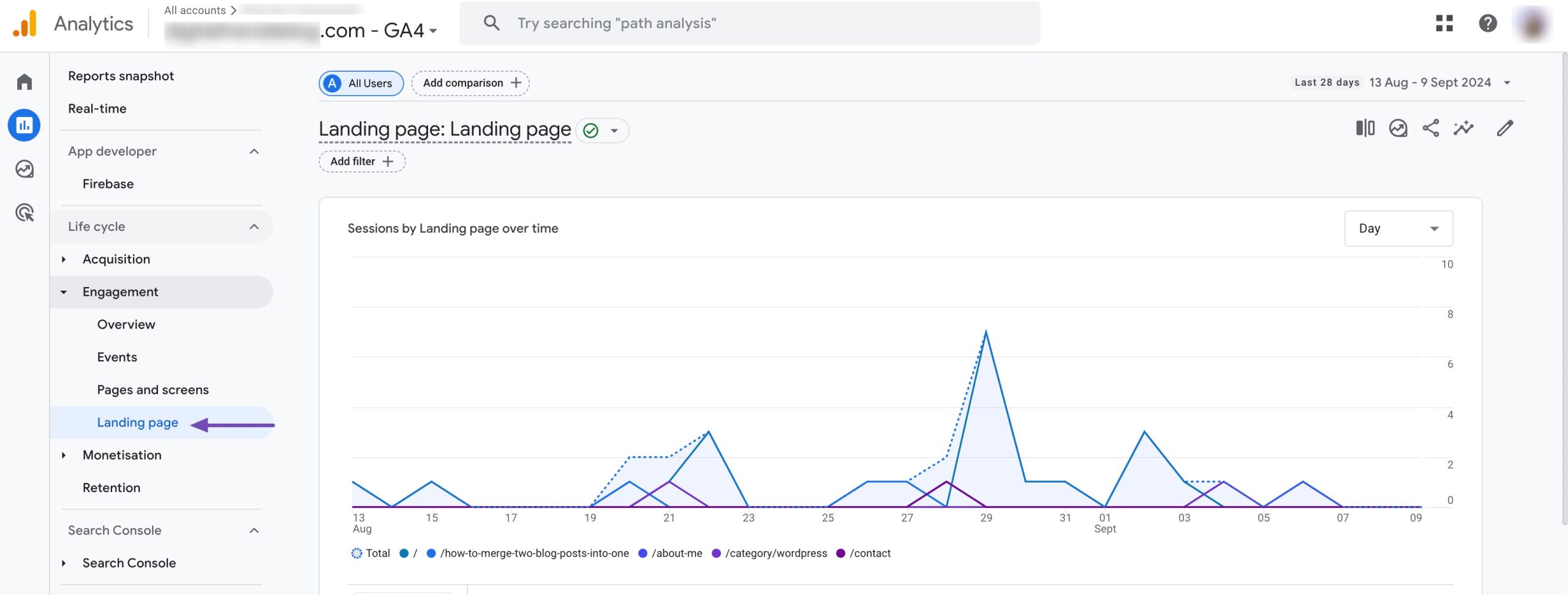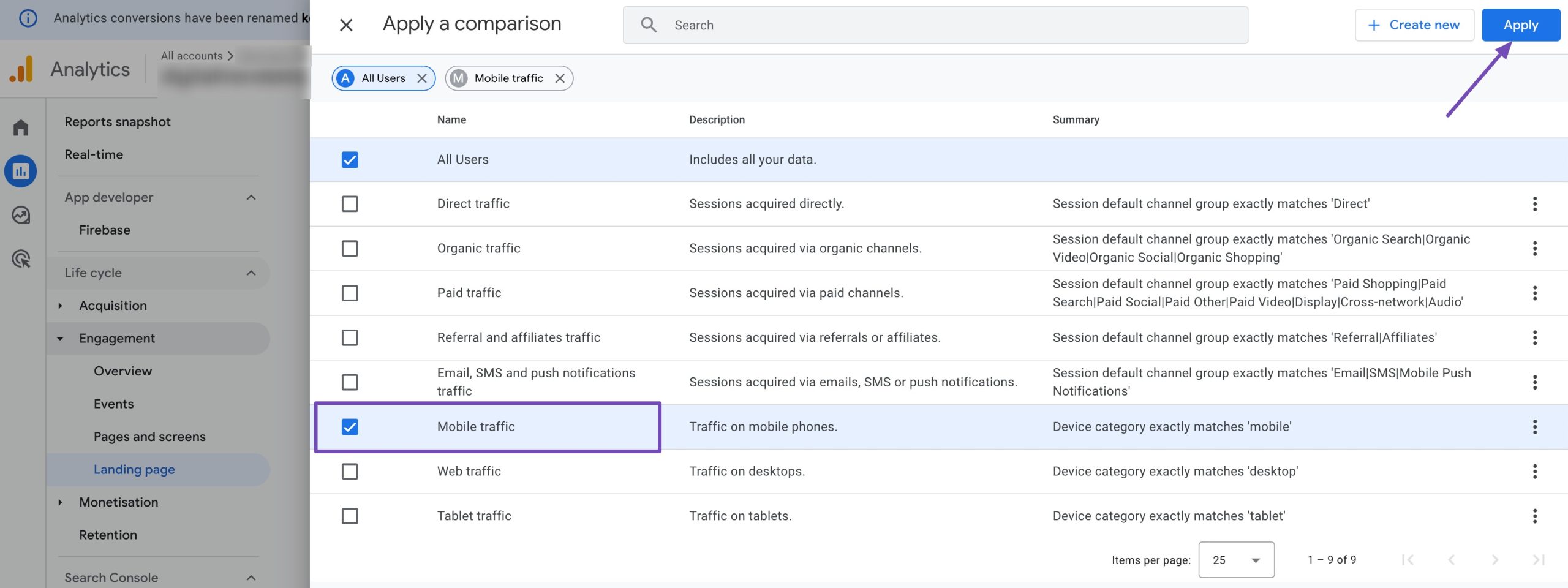Optimizing for mobile devices is no longer optional – it’s a necessity.
Studies show that 53% of the audience will abandon a mobile site if it takes longer than 3 seconds to load, underscoring the importance of fast mobile performance.
Mobile SEO, the practice of enhancing your website’s performance and visibility on smartphones and tablets, has taken center stage as more audiences access the internet via mobile devices.
Optimizing for mobile goes beyond responsive design. Is your page loading quickly? Is your content easily accessible and engaging on a small screen?
In this post, we’ll discuss the essential strategies for mobile SEO.
So, without any further ado, let’s get started.
1 What is Mobile SEO?
Mobile SEO refers to optimizing a website to ensure it performs well on mobile devices, such as smartphones and tablets.
This optimization involves improving the user experience (UX) by ensuring the site is fast, easy to navigate, and fully functional on smaller screens.
As more audiences access the Internet via mobile devices, optimizing for mobile has become increasingly important for website visibility and user experience.
Let us now discuss the importance of mobile SEO.
2 The Importance of Mobile SEO
The importance of mobile SEO cannot be overstated, as mobile devices dominate internet usage.
As mobile traffic continues to grow, with over half of global web traffic coming from mobile devices, you need to ensure that your website is optimized for the audiences.
Mobile SEO is important in enhancing user experience, improving search engine rankings, and driving engagement on mobile platforms.
Websites that are not mobile-friendly risk losing potential visitors due to poor navigation, slow load times, or unresponsive layouts, which can significantly impact bounce and conversion rates.
Moreover, with Google’s mobile-first indexing, the mobile version of a website is prioritized for indexing and ranking. This shift means that if a website isn’t optimized for mobile, it can suffer in search rankings, leading to a loss of visibility and organic traffic.

Fast page load times and clear and easy navigation are important for retaining mobile audiences with shorter attention spans and higher expectations.
Investing in mobile SEO can improve your chance of ranking higher and ensure that your content reaches a broader, mobile-first audience.
3 Best Practices for Mobile SEO
Let us now discuss the best practices for mobile SEO.
3.1 Create Mobile-Friendly Content
Mobile-friendly content formats are essential for ensuring a positive user experience on mobile devices.
Given that mobile audiences typically have limited screen space and shorter attention spans, it is important to present content in a way that is easy to read and navigate.
Scannable content, which involves using short paragraphs, bullet points, and clear headings, makes it easier for mobile audiences to find the information they need without being overwhelmed by large blocks of text.

For instance, an article on a mobile site should break its content into bite-sized paragraphs of 2-3 sentences each, with descriptive headings that help the audience quickly identify relevant sections.

Using bullet points also helps highlight key information, making it simple for your audience to digest important points.
3.2 Use Structured Data on Mobile Devices
Structured data is a standardized format using Schema markup, providing search engines additional context about what a page’s content represents.
By using Schema markup, you can make your content eligible for rich snippets—enhanced search results that display more detailed information such as product reviews, recipes, and event details directly on the search engine results page (SERP).

These rich snippets are especially important for mobile audiences, as they provide quick access to relevant information without requiring users to click through to the site.
For example, a recipe blog using Schema markup can feature its recipe in a rich snippet with an image, ratings, and step-by-step instructions. This enhances visibility and improves click-through rates (CTR) on mobile, where audiences seek fast and direct answers.

Additionally, mobile-friendly SERP features, such as Accelerated Mobile Pages (AMP), are designed to improve mobile performance.
AMP is a framework that strips down web pages to their essential elements, allowing them to load almost instantly on mobile devices.

For instance, a news website using AMP can deliver articles faster to mobile readers, enhancing user experience and retaining mobile traffic.
3.3 A Responsive Web Design
Responsive web design is a web development approach that allows a website to adapt its layout and content to different screen sizes, providing an optimal viewing experience across devices such as desktops, tablets, and smartphones.
Rather than designing separate versions for each device, responsive design uses flexible grids, fluid images, and CSS media queries to ensure the website looks and functions well on any screen size.
This adaptability improves user experience, eliminating the need for mobile users to zoom in, scroll horizontally, or deal with misaligned content.
One key advantage of responsive web design is the use of a single URL for both desktop and mobile versions of a website.
This is important for mobile SEO because it ensures that all traffic is directed to the same URL, consolidating search rankings and simplifying the indexing process for search engines like Google.
For instance, consider a news website that displays a multi-column layout on a desktop, showing different news categories side by side. The same site will automatically shift to a single-column layout on a smartphone, stacking the content vertically to fit the smaller screen.

Images will resize proportionally, and the navigation bar might collapse into a hamburger menu for easier access. This ensures mobile audiences have an amazing browsing experience without zooming or excessive scrolling, enhancing overall engagement and satisfaction.
3.4 Target Voice-Search Friendly Keywords
Targeting voice-search-friendly keywords is an increasingly important aspect of mobile SEO as voice assistants like Siri, Google Assistant, and Alexa continue to grow.
Unlike traditional typed searches, voice searches are more conversational and longer, often phrased as complete questions.

Voice searches typically involve long-tail keywords and are more likely to be phrased as questions. For instance, while a typed query can be best pizza places, a voice search can sound like, What are the best pizza places near me? This means that content needs to address these natural language queries directly, with an emphasis on question-based keywords like who, what, where, when, how, and why.
To optimize for voice search, use natural language in your content. This means structuring content to mirror how people speak, such as using a conversational tone and addressing specific user questions.
Use long-tail, question-based keywords. For instance, an automotive repair shop can target keywords like, How can I tell if my car needs an oil change? rather than simply a car oil change.
Optimize for local SEO, as voice searches are often location-based. Mobile audiences frequently ask for nearby services, such as Where is the nearest coffee shop?
Refer to our dedicated tutorial on voice search optimization to gain valuable mobile traffic and improve your visibility in voice search results.
3.5 Optimize Mobile Site Speed
Optimizing mobile site speed is an important aspect of mobile SEO, as fast-loading websites provide a better user experience and are favored by search engines like Google.
Mobile audiences typically access websites on the go and expect pages to load quickly. Improving site speed keeps audiences engaged and improves search rankings, as Google considers page speed a key ranking factor, especially after the introduction of Core Web Vitals.

PageSpeed Insights is a free tool provided by Google that allows you to measure your website’s performance on desktop and mobile devices.
Enter the URL of the webpage you want to test and click Analyze.

The tool will highlight opportunities and diagnostics to improve your mobile site speed. Review them and make the necessary changes to optimize your mobile site speed.
3.6 Optimize Title Tags & Meta Descriptions for Mobile SERPs
Title tags and meta descriptions significantly improve click-through rates (CTR) and overall visibility in search engines, especially given the limited screen space on mobile devices.
Aim for around 50 to 60 characters to optimize the title tags, as mobile screens can cut off longer titles. Shorter titles prevent truncation and ensure the entire message is visible to the audience.
The title should clearly describe the page content while compelling enough to encourage clicks.
Similarly, keep meta descriptions around 120 characters. Briefly summarize the content and emphasize value, such as answering a question, offering a solution, or providing detailed information.
If you’re uncomfortable writing the title tags and meta descriptions, you can use Content AI to create titles and descriptions that get clicked.

3.7 Monitor Mobile Performance
Google Analytics 4 is a powerful tool for tracking mobile traffic, bounce rate, mobile conversions, and other important performance metrics.
Start by logging into your Google Analytics account. Navigate to Behavior → Site Content → Landing page on the left-hand navigation bar, as shown below.

To include mobile information for each page, click on Add comparison at the top of the page.

Select the Mobile traffic from the available options and click the Apply button.

You’ll now be able to see the mobile traffic, which will help you identify issues like high bounce rates or low conversion rates on mobile devices.

4 Conclusion
Mobile SEO is important to succeed in an increasingly mobile-driven world.
With more people relying on smartphones to browse, shop, and search, optimizing your site for mobile devices can significantly improve user experience, search rankings, and overall engagement.
Regularly monitoring mobile performance metrics and making data-driven improvements will enhance your site’s visibility and help drive conversions and long-term success.
As mobile trends continue to evolve, are you ready to take the necessary steps to ensure your site stays mobile-optimized?
If you like this post, let us know by Tweeting @rankmathseo.
